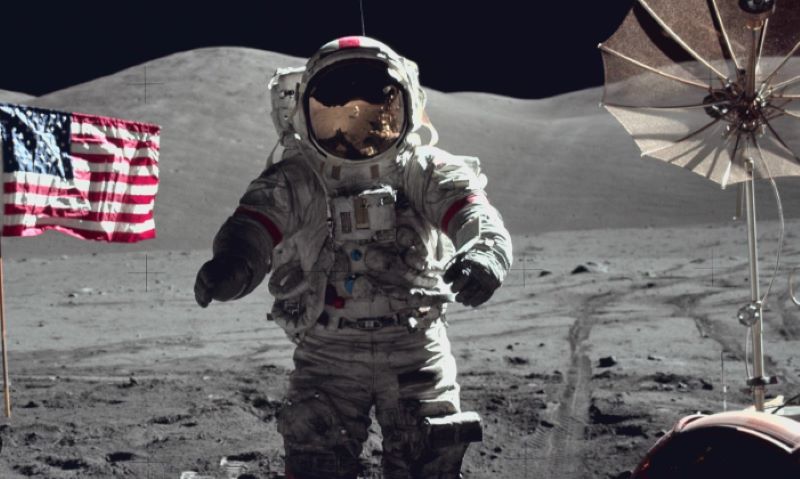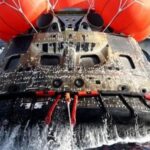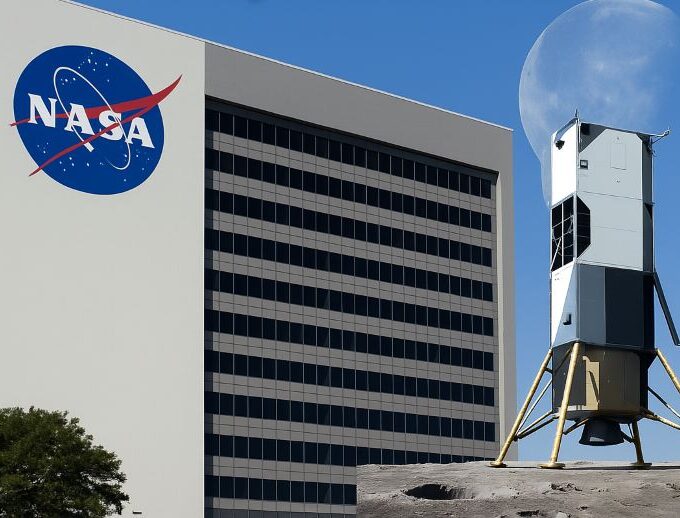The United States’ Artemis Program, designed to return astronauts to the Moon, has faced significant delays and challenges, pushing back its timeline by years. Initially set for the early 2020s, the program now anticipates a crewed lunar landing no earlier than 2026. The delays stem from ongoing issues in three critical areas: the Orion spacecraft, the Space Launch System (SLS) rocket, and the development of new spacesuits for lunar missions. These technical setbacks not only affect the schedule but also highlight the complex, high-risk nature of space exploration technology.
Orion spacecraft: ongoing issues and safety concerns
The Orion spacecraft plays a crucial role in the Artemis missions, tasked with ferrying astronauts to lunar orbit and back to Earth. However, the spacecraft’s performance during the Artemis 1 mission raised serious concerns about its design and technology. Specifically, the spacecraft’s heat shield experienced unexpected ablation during re-entry, revealing vulnerabilities in the spacecraft’s heat management system. This failure led to a reevaluation of the materials and technology used to protect the spacecraft from the extreme temperatures encountered during re-entry.

Furthermore, the life support system aboard Orion faced technical difficulties, with failures in the carbon dioxide removal system that would jeopardize crew safety on a crewed mission. These issues revealed flaws in the integration of critical technologies that ensure astronaut survival in deep space. NASA has now decided to replace many of these electronic components, which will require extensive testing before they can be cleared for use in future missions. The reworking of this technology and the need for additional testing contribute significantly to the delays in the Artemis program.
SLS rocket: the “king of delays” with escalating costs
In addition to the Orion spacecraft, the other major challenge to the Artemis Program has been the development of the Space Launch System (SLS) rocket, the heavy-lift vehicle designed to launch the Orion spacecraft into lunar orbit. Originally billed as the most powerful rocket NASA had ever developed, the SLS was meant to be ready for its first test launch in 2016. However, a series of technical failures, safety issues, and delays has meant that the rocket’s development has been anything but smooth. Despite being ready for launch in late 2022, the SLS rocket only successfully completed its maiden flight in November of that year, nearly six years behind schedule.
Beyond delays, the SLS program has been plagued by soaring costs. Each SLS launch is estimated to cost around $4 billion, a figure that far exceeds initial projections and has made the rocket a target of criticism. Some have dubbed the SLS the “king of delays” due to its repeated postponements. Given its high cost, there are growing concerns about the program’s sustainability. According to reports, NASA is currently re-evaluating the SLS program, with some suggesting there’s a 50% chance it could be cancelled.

In response to the rising costs and delays, SpaceX’s Starship has emerged as a potential alternative. The Starship system, which includes both the Super Heavy booster and the Starship spacecraft, is designed to be fully reusable, which would significantly reduce launch costs. With a payload capacity of over 100 tons to low Earth orbit, Starship has the technical ability to carry out the Artemis mission. In fact, a modified version of Starship is already scheduled to serve as the lunar lander for Artemis missions. However, Starship is also experiencing significant delays. SpaceX does not expect to begin testing the spacecraft’s in-orbit fuel transfer capabilities until 2027, and the lunar lander’s development is also behind schedule. If Starship were to take over the launch role for Orion, it would need to demonstrate its ability to safely send humans to the Moon and return them to Earth, which would add additional time to the already delayed Artemis mission timeline.
Spacesuits: slow progress and outsourcing issues
The third major challenge the Artemis Program faces is the development of new spacesuits for lunar missions. NASA had originally planned to develop a next-generation spacesuit called the Extravehicular Mobility Unit (XEMU), which would feature improved mobility, protection, and life support systems tailored to the challenges of the Moon’s surface. However, the development of the XEMU spacesuit has encountered significant delays, which have pushed back the timeline for crewed lunar missions.
A 2021 report by NASA’s Inspector General criticized the spacesuit project for not meeting its original milestones, citing ongoing technical challenges and missed deadlines. Faced with mounting pressure, NASA outsourced the spacesuit development to Axiom Space, which is working to develop a new suit based on NASA’s earlier designs. However, Axiom’s progress has also been slow, and the spacesuits are still in the early stages of development. Another backup plan to develop spacesuits for the International Space Station (ISS) also fell apart when contractor Collins Aerospace unexpectedly withdrew from the project.

Given these delays, some have speculated that SpaceX may step in to provide spacesuits for the Artemis missions. SpaceX has already developed a spacesuit for its Crew Dragon spacecraft, which was successfully tested during the Polaris Dawn mission. However, SpaceX’s spacesuit does not yet include the necessary life support systems required for lunar missions, meaning that additional testing and modifications would be needed before it could be used on the Moon. The potential for SpaceX to step in and develop the required spacesuit, while certainly plausible, adds yet another layer of uncertainty to the Artemis timeline.
Conclusion: overcoming technological hurdles and delays
The Artemis Program represents a major step in advancing U.S. space exploration, but its progress has been significantly hindered by a combination of technical and financial challenges. The delays in the Orion spacecraft, the rising costs of the SLS rocket, and the slow pace of spacesuit development all underscore the complexity and risks of modern space technology. While these problems are not insurmountable, they highlight the delicate balance between technological innovation and the logistical challenges of meeting ambitious goals. If NASA cannot overcome these obstacles, it may fall behind in the global race for lunar exploration, especially as nations like China continue to make progress in their own lunar missions.
To succeed, the U.S. will need to embrace cutting-edge technologies, such as reusable launch vehicles and advanced spacesuit designs, to meet the ambitious goals of Artemis. The ability to solve these problems will be crucial not only for the success of Artemis but also for setting the stage for future human missions to Mars and beyond.












